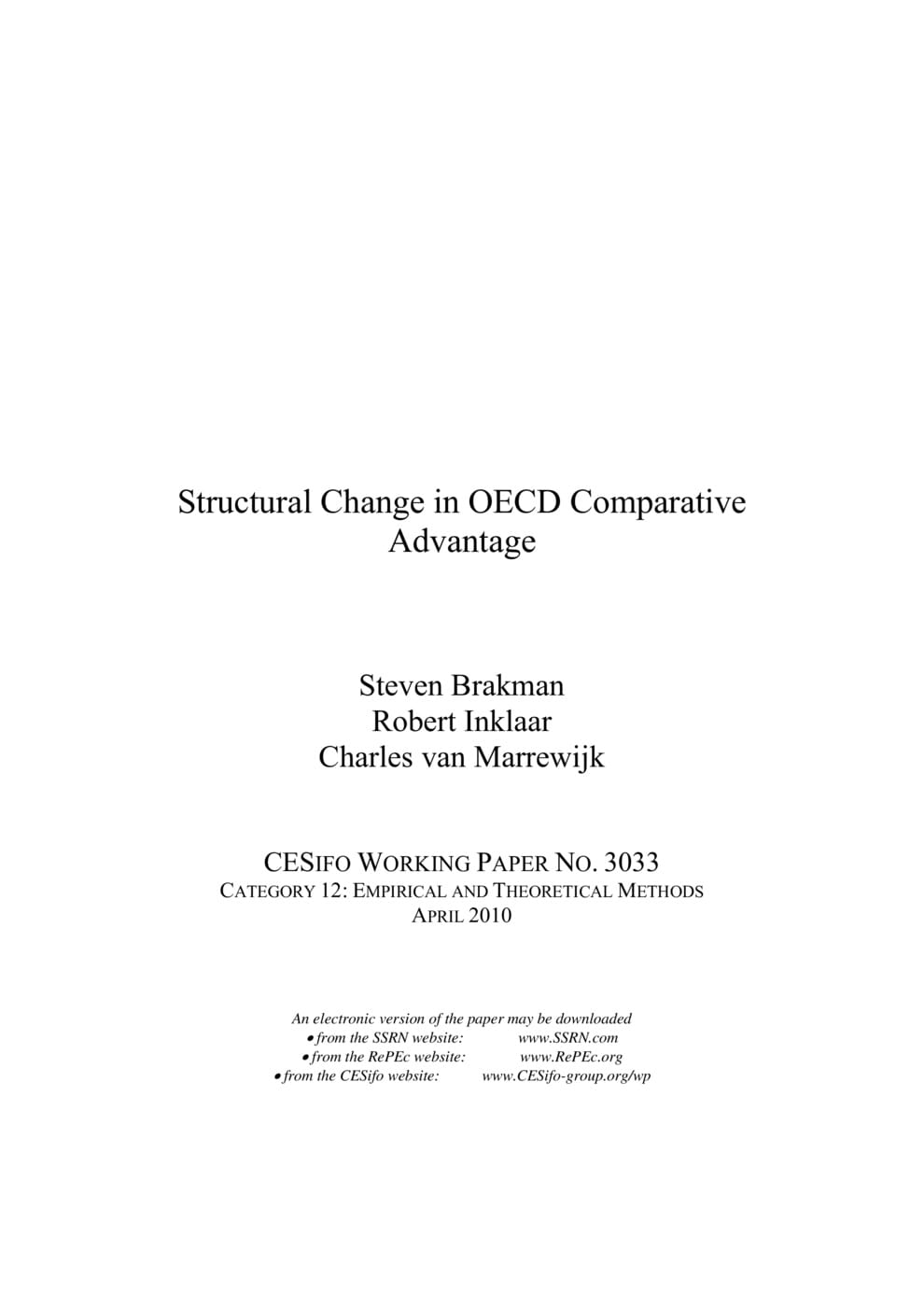Structural Change in OECD Comparative Advantage
CESifo, Munich, 2010
CESifo Working Paper No. 3033

In the post-war period, the goods composition of trade in OECD countries has changed considerably. We analyze the evolution of comparative advantage using a detailed trade data set and a new analytical tool: the harmonic (weighted) mass index, which enables us to identify periods of structural change. We then analyze which forces may be responsible for the main structural changes, which primarily took place in many OECD countries in the mid 1980s. We argue that neither the rise of China and India nor the deregulation programs in many OECD countries is likely to have been the main cause. Instead, the interaction between the real and monetary economy (possibly fuelled by nominal rigidities and delays in exchange rate pass through) as measured by the large swing in the real effective exchange rate of the dollar in the 1980s is our primary candidate. In view of similar recent large swings, we argue it is likely that the OECD countries will again go through substantial structural adjustments in the near future.
Empirical and Theoretical Methods